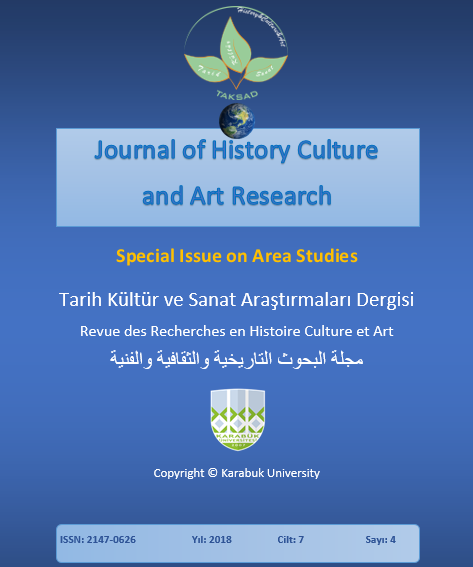Effects of New Economic Reality on Social Changes: A Cross-Cultural Analysis
DOI:
https://doi.org/10.7596/taksad.v7i4.1805Keywords:
Rural sociology, Social problems, Rural way of life, Life quality.Abstract
The paper presents a cross-cultural analysis of the life quality of the rural population on the materials from various sources in Russia and Kyrgyzstan. A brief review of the research field, foreign and domestic works is presented. The problem potential of the life quality of the rural population is revealed based on the materials of our empirical research. Methods of research were a mass survey (Republic of Kyrgyzstan), analysis of statistical data for the Russian Federation and the Republic of Kyrgyzstan. The authors made a conclusion about the predominantly negative influence of modern socio-economic processes on the life quality of the rural population. The similarity of situations in both regions is ascertained and the necessity of optimizing the policy pursued with respect to rural areas is justified.
References
Barua A.; Mangesh R.; Harsha Kumar H. N. & Mathew S. (2007). A cross-sectional study on life quality in geriatric population. Indian J. Community Med, 32 (2): 146–147.
Gann G. V. (2012). Life quality of the rural population // EKO. No. 10; P. 141-148. (In Russ.)
Huppert Felicia A. & Whittington Joyce E. (2003). Evidence for the independence of positive and negative well-being: Implications for life quality assessment. British Journal of Health Psychology. Vol. 8 Feb. Pp. 107-122.
Khudyakov S. I. (2009). A new role of culture in the transformed society: from an economy-centrism to a culture-centrism. Social humanitarian knowledge. No. 2; 68 p. (In Russ.)
Kurkina M. P. (2012). Reproduction of population and life quality in rural areas] // NIC Sociosfera, Conference collections SIC. No. 11; P. 65-69. (In Russ.)
Mathew A. Mwanyangala; Charles Mayombana; Honorathy Urassa; Jensen Charles; Chrizostom Mahutanga; Salim Abdullah & Rose Nathan (2010). Health status and life quality among older adults in rural Tanzania. Global Health Action. Jul. Pр. 36-45.
Mendibayev N. (2014). Selo as a societal integrity in a transformed society. Bishkek, 109 p. (In Russ.)
Molchanova A. V. & Abryandina V. V. (2016). Actual problems of economic sustainability of rural areas // Economics, management, and labor in agriculture. No. 1(26); P. 103-106. (In Russ.)
Mudey A. & Ambekar S. (2011). Assessment of Life quality among Rural and Urban Elderly Population of Wardha District, Maharashtra, India. Studies on ethno-medicine. Vol. 5. Is. 2. https://doi. org/10. 1080/09735070. 2011. 11886394
Mudey Abhay; Ambekar Shrikant; Goyal Ramchandra C.; Agarekar Sushil & Wagh Vasant V. (2004). Rural Health Disparities, Population Health, and Rural Culture. American Journal of Public Health, Pp. 89-93.
Official website of Rosstat URL http://www. gks. ru/wps/wcm/connect/rosstat_main/rosstat/ru/statistics/population/demography/# (accessed 16. 04. 2018) (In Russ.)
Official website of the National Statistical Committee of the Kyrgyz Republic. URL http://www. stat. kg/ru/statistics/naselenie/ (accessed 19. 05. 2018)
Podgorbunskikh P. E. & Golovin S. G. (2012). Algoritm of monitoring of a sustainable development of rural territories. Agrarian bulletin of the Urals. No. 5 (97); 80 p. (In Russ.)
Sanjiv Mahadeva; Hematram Yadav; Sanjay Rampal & Khean-Lee Goh (2010). Risk Factors Associated with Dyspepsia in a Rural Asian Population and Its Impact on Life quality. The American Journal of Gastroenterology. Vol. 105. Pp. 904–912.
Voronin B. A.; Mayzel' S. G.; Voronina Y. V.; Fateeva N. B. & Dolgopolova A. A. (2016). Life quality in rural areas: status, ways to improve. Agricultural Education and Science. No. 3; P. 4-11. (In Russ.)
Downloads
Published
How to Cite
Issue
Section
License
All papers licensed under Creative Commons 4.0 CC-BY.- Share — copy and redistribute the material in any medium or format
- Adapt — remix, transform, and build upon the material for any purpose, even commercially.
Under the following terms:
Attribution — You must give appropriate credit, provide a link to the license, and indicate if changes were made. You may do so in any reasonable manner, but not in any way that suggests the licensor endorses you or your use.
- No additional restrictions — You may not apply legal terms or technological measures that legally restrict others from doing anything the license permits.







